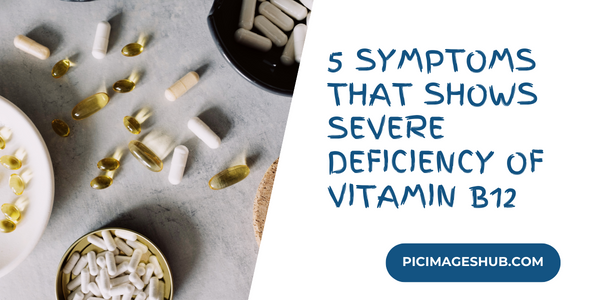7 Superfoods for Fat Loss: The Science of Burning Fat
Supercharge Your Fat Loss: The Ultimate Guide to Nutrient-Dense Superfoods
Losing fat isn't just about cutting calories—it's about making every calorie count. While the market is flooded with quick fixes and fad diets, the most sustainable and effective path to a leaner you lies in smart nutrition. By strategically adding nutrient-dense superfoods to your diet, you can support your body's natural fat-burning processes, control cravings, and feel fuller for longer.
This isn't a magic bullet, but a science-backed strategy to optimize your fat loss journey. Let's dive deep into what makes these foods so powerful and how you can seamlessly incorporate them into your daily life.
What Makes a Food "Super" for Fat Loss?
A food earns its "super" status in the fat loss world by meeting several key criteria:
High Satiety: They are rich in fiber or protein, which keeps you feeling full and satisfied, reducing the temptation to overeat.
Metabolism Support: They are packed with vitamins, minerals, and antioxidants that are crucial for a healthy, efficient metabolism.
Blood Sugar Regulation: They help to stabilize blood sugar levels, preventing the energy crashes and intense cravings that often lead to unhealthy snacking.
Healthy Fats: They provide essential fats that not only support satiety but are also linked to improved metabolic function and reduced abdominal fat.
The Powerhouse Superfoods: A Deep Dive into Their Benefits
Let's explore the scientific reasons why specific foods are celebrated for their fat loss properties, complete with details on key studies and findings.
1. Green Tea: The Metabolism-Boosting Brew
Green tea is more than just a calming drink; it's a proven metabolism accelerator. Its power lies in catechins, a type of antioxidant, with EGCG (epigallocatechin gallate) being the star player.
How it works: A landmark 1999 study by Dulloo AG et al. found that green tea extract significantly raised fat oxidation by 20% compared to caffeine alone, suggesting its unique compounds actively help your body burn fat for energy. Other research, like a 2013 study by Hodgson AB et al., has consistently supported these fat-burning effects.
How to use: Drink 2-3 cups of plain green tea per day, either hot or iced, to get the full benefits without added sugars.
2. Eggs: The Ultimate Satiety Secret
Often hailed as nature's perfect food, eggs are a fantastic source of high-quality protein and essential nutrients like vitamin D and choline.
How it works: A 2020 study by Keogh JB and Clifton PM showed that an egg-based breakfast reduced lunchtime calorie intake and hunger levels compared to a cereal-based one. The protein in eggs helps you feel full and satisfied for longer, preventing mid-morning snacking. Furthermore, eating enough protein is crucial for preserving muscle mass while you're in a calorie deficit, which is essential for maintaining a high metabolic rate.
How to use: Start your day with a two-egg omelet packed with spinach and mushrooms, or keep hard-boiled eggs on hand for a quick, high-protein snack.
3. Greek Yogurt: Your Gut's Best Friend for Fat Loss
With its creamy texture and tangy flavor, Greek yogurt is more than a delicious treat. It's a powerhouse of protein and probiotics.
How it works: A 2005 study by Zemel MB et al. found that participants on a calorie-controlled diet who consumed yogurt lost 61% more body fat and an impressive 81% more abdominal fat than those who didn’t. The combination of high protein for satiety and probiotics for a healthy gut biome makes it a dual-action fat-loss food. A balanced gut is now widely understood to play a critical role in metabolism and weight regulation.
How to use: Enjoy a serving of plain Greek yogurt topped with a handful of berries and a sprinkle of nuts for a balanced breakfast or snack.
4. Leafy Greens: The Low-Calorie Volume Hack
Spinach, kale, arugula, and Swiss chard are loaded with fiber, vitamins, and minerals, but contain very few calories.
How they work: The high fiber and water content of leafy greens help to fill up your stomach, promoting a sense of fullness that can significantly reduce your overall calorie intake. One large review of over 47,000 women found that those who increased their intake of leafy greens and other vegetables had a lower BMI and a reduced risk of abdominal obesity. Spinach, in particular, has been shown to boost satiety and support fat loss in several clinical reviews.
How to use: Blend a handful of spinach into your morning smoothie, or use a large bowl of kale as the base for a hearty salad.
5. Berries: Nature's Sweet, Fat-Fighting Treat
Berries like blueberries, strawberries, and raspberries are rich in fiber and antioxidants known as anthocyanins and polyphenols.
How they work: Their high fiber content helps to regulate blood sugar, preventing the spikes that lead to sugar cravings. A 2020 trial at Humboldt State University found that participants who consumed one cup of wild blueberries daily showed a significant increase (19-43%) in fat burning during moderate exercise. Blackberries have also been shown to increase 24-hour fat oxidation in overweight men.
How to use: Use them to sweeten your breakfast, have a small bowl as a dessert, or snack on a handful throughout the day.
6. Oats: The Slow-Digesting Carb Champion
Oats are celebrated for their β-glucan, a type of soluble fiber that has a profound impact on satiety and blood sugar control.
How they work: A 2015 randomized crossover trial by Rebello CJ et al. found that instant oatmeal increased fullness and reduced hunger compared to an oat-based cereal. The β-glucan in oats forms a viscous gel in your stomach, slowing down digestion and providing a steady release of energy that prevents cravings and keeps you full for hours.
How to use: Prepare a simple bowl of porridge for breakfast, or make overnight oats by combining oats with Greek yogurt, milk, and berries.
7. Avocado: The Healthy Fat That Burns Fat
Avocado is a perfect example of a food that proves not all fats are created equal. It is rich in monounsaturated fats and fiber.
How it works: The HAT Study (2022), led by Lichtenstein AH et al., found that regular avocado consumption did not lead to weight gain and may even help reduce belly fat over six months. The combination of healthy fats and fiber helps to control appetite, making you feel satisfied and less likely to reach for unhealthy snacks.
How to use: Add a quarter or half of an avocado to your salads, sandwiches, or smoothies.
8. Nuts & Seeds: Tiny Powerhouses of Satiety
Almonds, walnuts, and chia seeds offer a powerful trifecta of healthy fats, protein, and fiber.
How they work: A meta-analysis by Flores-Mateo G et al. (2013) found that diets including nuts did not lead to weight gain. Instead, the combination of fat, protein, and fiber provides a feeling of sustained fullness that helps with appetite control. Walnuts, in particular, are known for their metabolism-boosting properties.
How to use: Snack on a small handful of almonds, or sprinkle chia seeds on your yogurt or salad for an extra boost of nutrients and satiety.
Your Superfood Fat Loss Strategy: A Simple, Step-by-Step Guide
The goal is not to eat all these foods at once, but to strategically incorporate them into your daily routine.
Start Strong: Begin your day with a high-protein breakfast like eggs or Greek yogurt to curb cravings for the rest of the day.
Hydrate Smart: Swap out sugary drinks for plain water or green tea to naturally boost your metabolism.
Fill Your Plate: Make half of your lunch and dinner plate filled with low-calorie, high-fiber leafy greens and cruciferous vegetables.
Snack Intelligently: Instead of reaching for processed snacks, opt for a handful of nuts, a cup of berries, or some plain Greek yogurt.
Listen to Your Body: Pay attention to how these foods make you feel. A diet rich in superfoods should leave you feeling energized and satisfied, not deprived.










